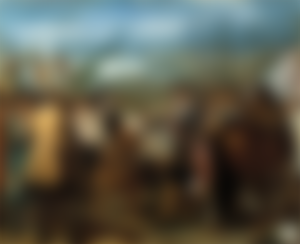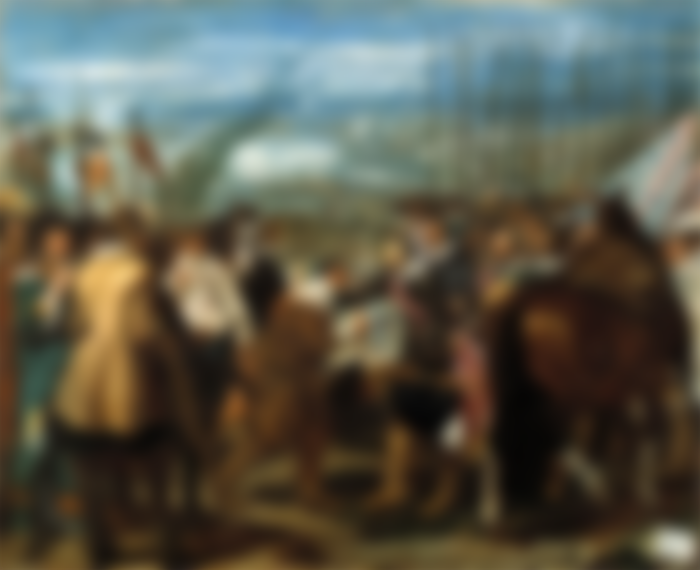Diego Rodriguez de Silva Velazquez (1599-1660)
The great painter and brilliant diplomat Diego Rodriguez de Silva Velazquez has become one of the brightest symbols of the 17th century art era. A talented artist, caressed by King Philip IV, lived a busy life and created amazing masterpieces of world painting. His works, called various critics, sometimes vital and sincere, sometimes cold and mysterious, have for many centuries won the hearts of art lovers around the world.

The exact date of birth of Diego Velazquez, the son of aristocrats, immigrants from Portugal, who lived in Spanish Seville, remained unknown. All we have is a record of June 6, 1599, testifying to the baptism of the future great master in the local church.
Diego was lucky from the very beginning, his parents favored the boy’s passion for drawing and early sent him to the studio of the most famous local painter - Francisco de Herrera the Elder (1576-1656). I must say that at that time, Seville was not just a thriving port city, it was famous throughout Spain for its monasteries, silk production, as well as poets, writers and beautiful painters.
The young artist was very diligent in training, and, according to early biographers, he grasped everything literally “on the fly”. However, only a year later, he left Herrera’s workshop, which was due to the extremely difficult character of the venerable painter.
Diego Velazquez was only 17 years old when he joined the corporation of Seville artists, after which his independent career began. Soon, Diego and Pacheco’s daughter, Juana Miranda, had two daughters: Ignasia and Francisco, however, the first of them, Ignasia, died while being very small. But the young artist, although he began the life of a family man, did not forget his career for a minute.
The artist managed to establish strong contacts at the court of Philip IV. Under the patronage of an old friend of the artist Pacheco - royal chaplain don Juan de Fonseca, Velazquez received an order for a portrait from Count Olivares. Amazing performance, a noble origin and the necessary connections helped the painter first find in the person of the count a patron and friend, and then gave the good will of the monarch himself. A young, educated polyglot and lover of beautiful women, King Philip IV, who fully trusted Olivares, finally agreed to meet a little-known Seville artist.
The fire in the royal palace of 1734 destroyed both the palace itself and the huge collection of works of art stored in it. Among the lost paintings were all the first portraits of the Duke of Olivares and King Philip IV, owned by Velasquez.
But there was evidence of contemporaries that the artist was awarded the highest praise that the king could have for his works. Immediately, on the first year of his arrival in the capital, on October 6, 1623, the artist was appointed court painter of the King of Spain. In his workshop, located in the wing of the palace of the Spanish monarch, a special chair was installed for His Royal Majesty, and Philip IV was located there at any time convenient for him, often opening the room with his own key.
In 1656, the renowned painter creates a picture considered the crown of his work and one of the most mysterious paintings in the history of art - “Menins” (Prado, Madrid).
Translated from Spanish, “menin” is a young girl of noble birth, who is the constant maid of honor of the princess and always accompanies her in her retinue. According to the inventory of the royal palace, the canvas was listed as “Family Portrait”, but it is very difficult to call it “family”, as, indeed, “Menins” is a surprisingly inappropriate name for it.
The art of Velazquez most deeply expressed the rapid flowering of realistic painting of the XVII century in Europe. True images created by a brilliant painter still serve as an unsurpassed example of perfection for true connoisseurs of art and artists of different generations.
In 1660, Velazquez went to the court of the French monarch to settle issues regarding the conclusion between the Spain and France of the "Iberian Peace", which ended the long-standing confrontation between the two countries. The essence of the artist’s mission, chosen by the trustee of the King of Spain, Philip IV, was to settle all the issues regarding the marriage between the eldest daughter of the king Maria Theresa and Louis XIV.
According to tradition, an event of this magnitude was required to be fixed with "blood ties." The artist not only wrote and delivered to Versailles the magnificent “Portrait of the Infanta Maria Theresa” (1652, Vienna Museum of Art and History), he also organized all the celebrations and receptions on this occasion, and even accompanied the royal motorcade to the wedding ceremony, which took place on the island Pheasants on the French-Spanish border.
And although Velazquez received many praises from Philip IV for his hard work, his strength and health were undermined. Returning to Madrid, the sixty-year-old painter felt a fit of fever. All the best court doctors gathered to save the beloved royal dignitary, but none of them could cure the master. On August 6, 1660, Diego Rodriguez de Silva Velazquez passed away.
